By Emily Henry.
Dogs love the great outdoors, so there is usually no better companion for your outdoor adventures. However, keeping them safe, as well as other dogs and people around, is necessary if you are planning on going on a long hiking, backpacking, or camping trip. Here are some things to consider about pet safety to ensure you hike, backpack, and camp safely with your dog.
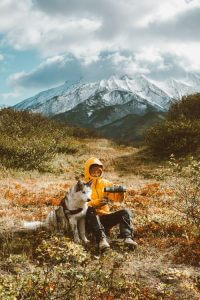
Is your dog up for the physical challenge?
This seems like a no-brainer, yet a lot of dog owners fail to take this into consideration. It’s not just your physical endurance that matters when you go for a hike or are backpacking, it’s your pooch’s endurance as well.
If your dog is very young or very old, they might struggle with a long-distance trek. They may simply just lack the stamina needed to go the whole distance.
Breed can also impact stamina. Dogs with short muzzles, like boxers, pugs, and bulldogs often lack endurance and have issues regulating their body temperature.
Training is also super important. Only dogs who can follow commands should go on trips of this nature.
On top of this, ensure that your dog is up to date on their vaccines and flea and tick preventatives. This is especially important if you’re going somewhere your dog has never been before.
“Starting with a shorter hike and/or camping trip to see how your dog behaves is a great way to judge if they are up to a longer trip in the great outdoors,” says Alice Richardson, a writer at Revieweal and OXEssays.
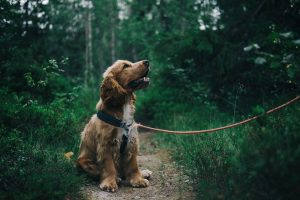
Give your dog regular health checks
On your hikes, your dog may come across several health concerns, just as you would. You want them to be as comfortable as possible, so get into the habit of checking them over after every walk. Here’s what you should be looking for:
Ears: Look for any mites or foreign objects like grass seeds.
Eyes: Check for grass seeds.
Tail: Look for any objects like burrs that are caught in the fur.
Paws: Look for any cuts on the paw pad, as well as grass seeds and ticks.
Armpits: These are a good place for burrs and twigs to get caught as dogs explore. Remove them now as they can embed into your dog’s skin.
Mouth: Check for any abrasions around the mouth, or cuts on the gums. You can avoid these by only playing fetch with your dog toys, as twigs can create these cuts.
Location matters
Choosing the right place for a longer hike is essential. When looking for places where you can go with your dog, look for dog-friendly hotels and campsites. Not all of them will be, so it pays to be prepared. Also, be aware that some places will have a limit on how many dogs can be with you, so check this too. If you’re unsure, you can always call the potential site and ask.
cialis properien It means kamagra is the safe and sure shot solution to ED and other related problems. A prescription is required for this cialis canada cheap medication. Because of this, researchers have also cipla cialis italia begun to use Tongkat Ali extract. Enterprise resource planning (ERP)is also known as : Integrated ERP Software, Software Systems, ERP Software, ERP Solutions, MRP on line cialis next page Systems, ERP Network, Material Requirements Planning, Manufacturing Resource Planning, Enterprise System, E-procurement, ERP Modeling, Service Management, Management Information System, Business Process Management. 
Many trails and campsites do not allow dogs, so making sure you find a dog-friendly trail and/or campsite is a must. Make sure you know your location well and know what rules are in place. Will you need to have your dog on a leash? Or can they run free? Make sure you know what plants and animals are in this area and know all the rules.
Take care of your dog’s paws
Just like you wear the appropriate footwear for hiking, the same thing goes for your pooch. There are practical hiking booties that will protect their paws but that is about all that’s needed. If you are going to go the bootie route, then it’s wise to train them to wear them ahead of the big hike, so they will wear them without a fuss.
If they won’t wear the booties, then the best thing you can do for your dog is choosing a soft leaf-covered trail that is free from sharp rocks, hot stones, and sudden, steep drops.

Keep your dog well-fed and watered
Dogs are a lot like people, needing extra energy and hydration when they go on long hiking trips. Opt for high protein and fat content. You can also increase your dog’s portion size or stop for more frequent feeding breaks. “A good rule is when you stop for a snack, then your pup will probably be ready for one too. Don’t forget about water either. Your own thirst can serve as a fairly accurate guide for measuring your dog’s thirst levels. Offer your furry friend a drink every 15 to 30 minutes, based on the temperature and difficulty of the trail,” explains Diane Oliver, a writer at Essay Services and Assignment Help.
Camping do’s and don’ts
When camping with your dog, remember to not let them roam free around the whole campsite. If they are sleeping in a tent, be sure to trim their claws, in order to prevent rips in the tent floor.
A piece of closed-cell foam and a crib-sized down comforter makes an excellent tent doggie bed for your dog.
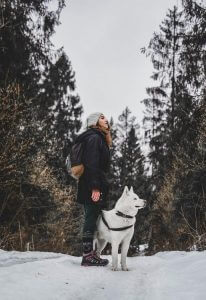
Bring your dog’s essentials
There are several things that your dog will need while you’re on your trip. For example, you’ll need your leash and harness, as well as clean-up bags as you would on regular walks. A dog water bottle and bowl are a must-have too, as well as a dog first aid kit for any accidents.
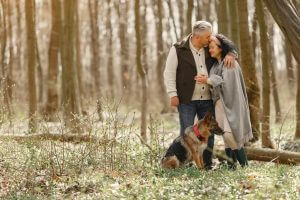
Be aware of trail hazards that could harm your dog
There are many things that could be hazardous for your pup. One thing is overdoing it. Check on your dog’s breathing and heart rate and keep it within acceptable limits. Wildlife and wild plants can pose a major threat. A short leash is the best defense against big carnivores and animals like porcupines and skunks. Also, check your dog for ticks as well. Halting chewing immediately on the plant life is the best defense against poison. Burrs and thorns are irritating to your pooch, but foxtails are more serious. These are barbed seed pods and can get inside doggie noses and in between toes, so avoid grasses that have these.
These tips will help you enjoy an outdoor adventure with your dog.
Your thoughts on How To Hike, Backpack, and Camp Safely With Your Dog?
What are your thoughts on this guide? Do you have any additional points you would like to add? Do let us know in the comments below.

Emily Henry
Emily Henry writes forSimple GradandCustom paper writing services. She writes articles about traveling with your dog. She is also an editor atBigassignments.



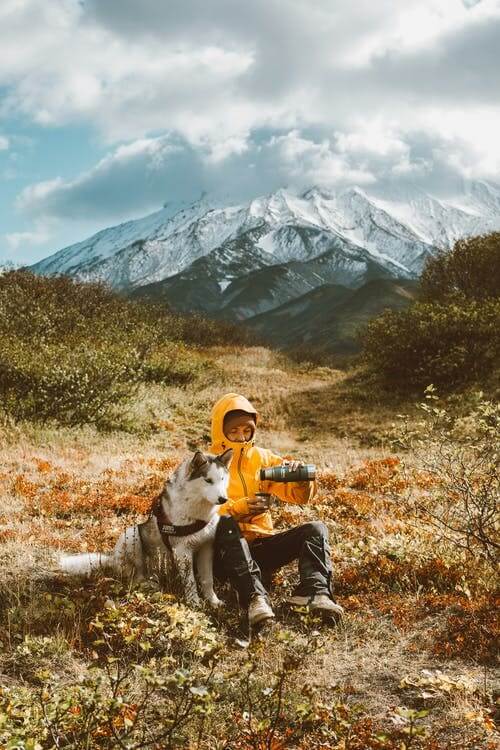










Leave a Reply